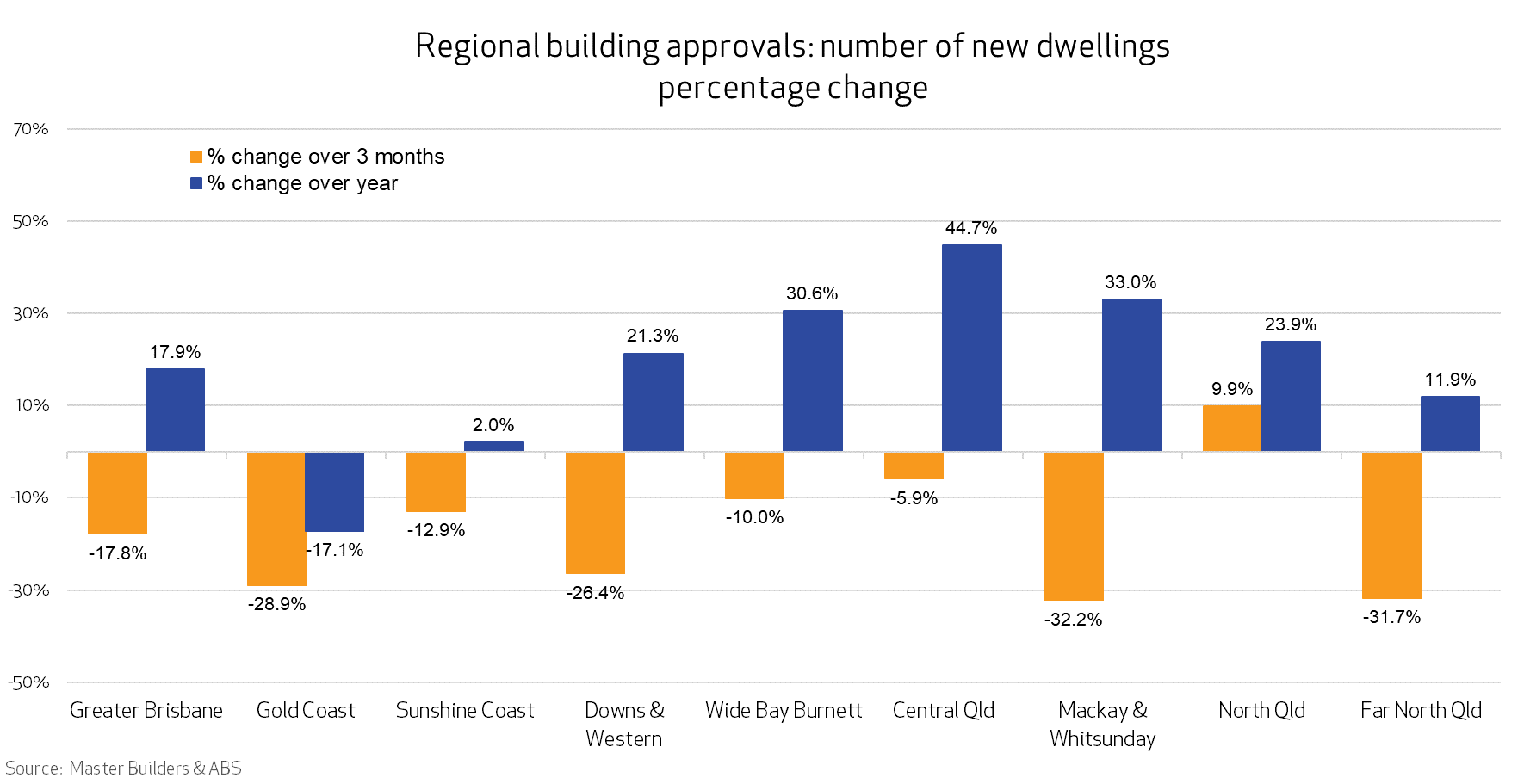16 April 2025
Building approvals for new houses and units have plummeted again across the majority of the state, with industry leaders spotlighting a critical skills shortage threatening to stall construction further.
The latest numbers from the Australian Bureau of Statistics (ABS) show Queensland is in a better place than February 2024, with approvals for detached homes and units up 8.4 per cent.
However, the 36,147 homes approved across the 12 months is still well shy of the government target of building 50 thousand homes per year – and the shorter-term, three-month trend to February 2025 shows approvals moving backwards at -8.8 per cent.
The decline is shared across most of the regions: Mackay & Whitsunday (-32.2 per cent), Far North Queensland (-31.7 per cent), Gold Coast (-28.9 per cent), Downs & Western (-26.4 per cent), Greater Brisbane (-17.8 per cent), Sunshine Coast (-12.9 per cent), Wide Bay Burnett (-10 per cent) and Central Queensland (-5.9 per cent). North Queensland (Townsville) was the only exception with a 9.9 per cent improvement.
“The disconnect between the number of people entering the building and construction industry and the workload we need to handle it is growing and is the most pressing challenge for our sector right now,” Master Builders CEO Paul Bidwell said.
“With a pipeline of just over $59 billion in homes, schools, hospitals, and community infrastructure in play for 2024-25, and the 2032 Olympic and Paralympic Games projects ahead, it’s time to rethink our approach to finding more workers.
“We are not the only ones in the industry sounding the alarm. Construction Skills Queensland’s Horizon 2032 report tells us the shortfall in the number of construction workers needed will persist in the next eight years, intensifying to about 50,000 in 2026-27.
“Through our updated Policy & Advocacy Agenda, we’re urging the government to implement a strategy focused on apprentice commencement and retention. This includes boosting wage subsidies for employers to encourage new apprentice placements, supporting small businesses with supervisory costs, and introducing financial incentives for apprentices upon completing their first year and again at graduation.
“We also need to stamp out perceived bias to encourage more women into our industry, and welcome skilled workers from overseas, providing bridging opportunities to recognise and help fill any gaps in their knowledge.
“Collaborative solutions involving government, industry and unions are critical to building a stronger future.”






